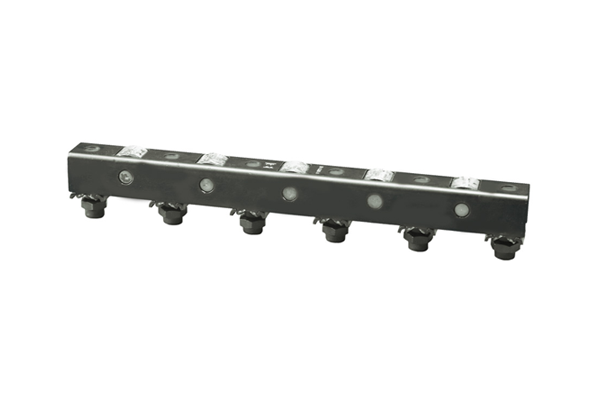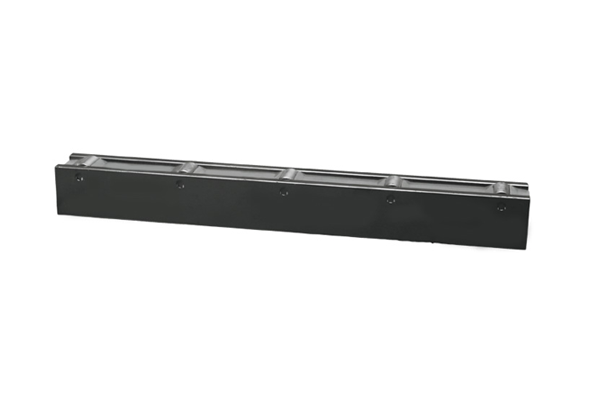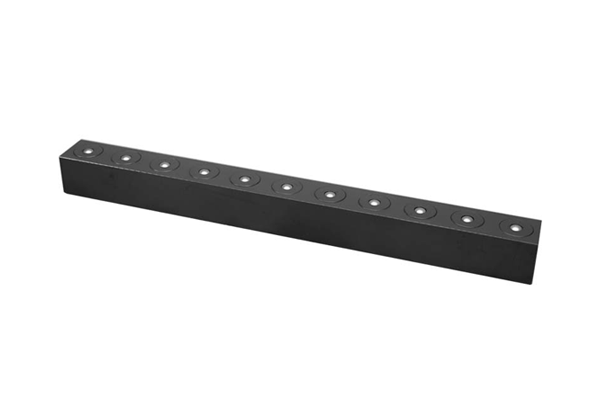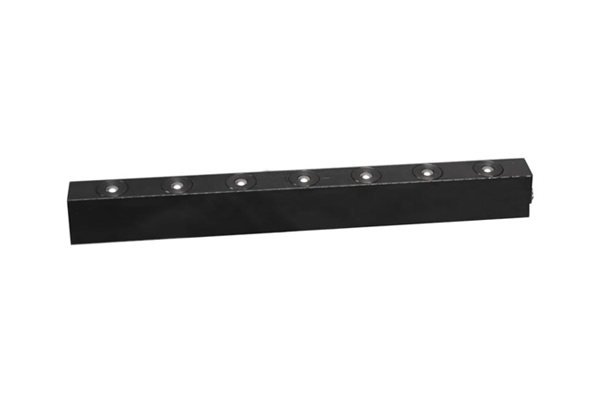Die Lifters : An Essential Tool for Stamping and Die Casting Efficiency

In the relentless drive to maximize efficiency within today's manufacturing landscape, every component counts. Die lifters—seemingly modest tools—are, in fact, revolutionizing stamping and die casting processes by elevating both efficiency and reliability to new heights. These devices are not just accessories; they are game-changers. The intricate mechanics behind die lifters, especially those crafted by pioneering industry leaders, are key to unlocking the full potential of your production line.
Dive deep into this exploration, where we unravel the complexities of die lifters: from their diverse operational frameworks—each tailored to specific needs—to the cutting-edge support techniques that are pushing the boundaries of what's possible in manufacturing technology, including advancements in the Quick Mold Change System . Understanding these nuances isn't just beneficial; it's imperative for anyone serious about optimizing workflow and staying ahead in a competitive market.
Understanding Die Lifters and Their Role
Die lifters are tools engineered to assist in the movement, positioning, and alignments of heavy dies within pressing machines. These powerful devices play a critical role in modern manufacturing by :
- Reducing Manual Labor :
- Boosting Productivity :
- Improving Safety :
They reduce the need for extensive manual handling of dies, conserving both time and energy.
Die lifters decrease changeover times, enabling faster transitions between production cycles.
By automating the die handling, they significantly lower the risk of workplace accidents and injuries.
By enhancing operational efficiency, die lifters foster safer and productive manufacturing environments.
Their capability to manage heavy loads with accuracy also guarantees consistent product quality, reducing the chances of defects and reworks.
Operating Mechanisms of Die Lifters
Die lifters come in various types, each with unique characteristics suited to different industrial needs. The table below highlights the key features and applications of each type:
-
Mechanical Die Lifters
These manually-handled die lifters utilize gears, screws, levers, or springs to lift dies. With a durable and simple design, they are ideal for smaller-scale operations that do not require a significant upfront investment.
-
Spring-Loaded Die Lifters
A subtype of mechanical die lifters, spring-loaded die lifters use built-in springs to assist in the lifting process. They offer a balance between manual handling and automated support, making them suitable for medium-scale operations. The spring mechanism ensures smooth, controlled lifting, reducing operator fatigue and enhancing safety. These lifters are particularly useful for operations requiring frequent die changes with minimal downtime.
-
Hydraulic Die Lifters
Using hydraulic cylinders to generate power, these die lifters offer precise control, high lifting capacity, and smooth operation. They are suitable for large-scale operations requiring heavy lifting capabilities, especially in the automotive or aerospace industries.
-
Pneumatic Die Lifters
Powered by compressed air systems, these die lifters are simple and versatile, capable of handling a wide range of die weights with quick lifting actions. They are commonly used in environments that require fast die changes.
-
Electric Die Lifters
These die lifters use an electric motor for lifting and are among the most complex designs, requiring specialized maintenance. They are known for their precise control and automation integration, making them perfect for automated production lines demanding precision and seamless integration with other automated systems.
These mechanisms ensure that die lifters can accommodate a variety of industrial applications, handling both light and heavyweight dies with precision and ease.
| Type | Key Features | Applications |
|---|---|---|
| Mechanical Die Lifters | Manual handling, gears, screws, levers, or springs, durable, simple, low upfront investment | Smaller-scale operations |
| Spring-Loaded Die Lifters | Built-in springs, balance between manual and automated, smooth, controlled lifting, reduces fatigue | Medium-scale operations, frequent die changes, minimal downtime |
| Hydraulic Die Lifters | Hydraulic cylinders, precise control, high lifting capacity, smooth operation | Large-scale operations, automotive, aerospace industries |
| Pneumatic Die Lifters | Compressed air, simple, versatile, quick lifting actions | Environments requiring fast die changes |
| Electric Die Lifters | Electric motor, precise control, automation integration | Automated production lines demanding precision and seamless integration |
Support Methods for Die Lifters
To improve their functionality, die lifters employ many support techniques that create a reliable foundation for an effective operation. These support methods are crucial for maintaining productivity and ensuring the safe and accurate positioning of dies. Here’s an overview at the different support methods used with die lifters:
- Roller Die Lifters :
- Ball Bearing Die Lifters :
- Slide Block Die Lifters :
- Rail Systems :
They employ cylindrical rollers to facilitate the smooth movement of heavy dies while minimizing friction. They are well-suited for high-capacity applications, distributing weight evenly and providing durability in challenging environments.

DR DIE LIFTER

DL DIE LIFTER (ROLLER TYPE)
These lifters use spherical ball bearings to enable precise and effortless movements of dies, providing high-accuracy and low resistance. They are effective for tasks that need accurate positioning.

DBSO DIE LIFTER (BALL TYPE)

DB28 DIE LIFTER (BALL TYPE)
Using flat sliding blocks, these lifters offer a simple and cost-effective choice for handling dies. They are ideal for less demanding precision applications and lighter dies and are easy to maintain.
Offer stable, linear guides for die lifters, ensuring consistent and controlled movement. They are well-suited in automated processes that require precision and repeatability, improving flexibility and efficiency in high-speed production lines.
| Support Method | Key Features | Applications |
|---|---|---|
| Roller Die Lifters | Cylindrical rollers, high capacity, durability, minimizes friction | High-capacity applications, challenging environments |
| Ball Bearing Die Lifters | Spherical ball bearings, precise and effortless movement, high accuracy, low resistance | Tasks requiring accurate positioning |
| Slide Block Die Lifters | Flat sliding blocks, simple, cost-effective, easy to maintain | Less demanding precision applications, lighter dies |
| Rail Systems | Stable, linear guides, consistent and controlled movement | Automated processes requiring precision and repeatability, high-speed production lines |
Integration of Die Lifters in Stamping and Die Casting
Incorporating die lifters into your stamping and die casting processes is a crucial step in optimizing manufacturing efficiency. Just as understanding the mechanics behind these essential tools can revolutionize your workflow, grasping the intricacies of mold clamping systems can further elevate your production line. For a deeper exploration of how mold clamping systems play a pivotal role in streamlining operations, check out our comprehensive guide, Everything You Need to Know About Mold Clamping Systems.
- Reduced Setup Times
- Lowered Labor Costs
- Enhanced Safety
Die lifters, integrated with quick die change systems, have dramatically reduced setup times by streamlining the die change process.
By automating the die change process with die lifters, manufacturers can decrease manual labor. This automation minimizes human error and reduces costs associated with die changes. The improved efficiency allows workers to focus on more critical tasks.
Die lifters enhance workplace safety by improving ergonomics and reducing the physical strain involved in manual die handling. Companies like Toyota have also incorporated ergonomic solutions, such as automated handling systems and adjustable workstations. Similarly, Forewells’ innovative handling solutions, including their die lifters, enhances the safety in manufacturing environments, enhancing workers safety.
Features and Selection Criteria for Die Lifters
When choosing a die lifter, it’s essential to consider several important features and criteria to ensure it aligns with your operational requirements:
- Load Capacity
- Adjustability
- Mode of Operation
- Integration and Compatibility
Confirm that the die lifter can handle the maximum weight of the dies utilized in your processes. This guarantees that lifters can manage heavy loads safely and effectively.
Opt for a die lifter with adjustable parts to fit various die sizes. The ability to make adjustments enhances the handling of different die dimensions and shapes, boosting versatility in your production workflow.
Pick a die lifter that offers an operation mode tailored to your specific needs and the skill level of your team. Options may range from manual to semi-automatic or fully automatic modes, each providing varying degrees of ease and control.
Make sure the die lifter can seamlessly integrate into your current production system. Asses its compatibility with other machinery and workflows to sustain or improve operational efficiency.
By concentrating on these aspects, you can select a die lifter that improves productivity, safety, and adaptability in your manufacturing setting.
Forwell’s Innovations in Die Lifter Technology
Forwell Precision Machinery has made remarkable advancements in die lifter technology, delivering state-of-art solutions that address a variety of operational demands. The innovations encompass :
- Patented Systems designed to enhance performance and reliability. These systems utilize sophisticated engineering to guarantee consistency. high quality operations, minimizing downtime and maintenance requirements.
- Tailored Configurations that meet specific production line needs. Our die lifters can be adjusted for different die sizes and weights, streamlining the handling process and enhancing overall production efficiency.
- Proven Success Stories with solutions successfully implemented in numerous industries, showcasing our value in real-world applications. Case studies and client testimonials highlight the benefits of Forewell’s die lifters, such as improved safety, reduced manual handling, and enhanced workflow
- Seamless Automation Integration in our die lifters, crafted to merge effortlessly with automated systems, providing greater flexibility and compatibility with smart manufacturing technologies.
By applying these innovations, Forwell not only improves the functionality of die lifters but also plays a vital role in the overall optimization of manufacturing processes, promoting better safety, efficiency, and operational excellence.
Expert Guidance for Die Lifter System Integration
Choosing the right die lifter and integrating it seamlessly into your manufacturing process can be a daunting task. At Forwell Precision Machinery, we specialize in simplifying this process. Our team of experienced consultants offers tailored solutions, ensuring that your die lifters are not only efficient but also perfectly integrated into your existing equipment and workflows. Contact us today for a free consultation and discover how Forwell can help you optimize your manufacturing operations and improve your bottom line.
